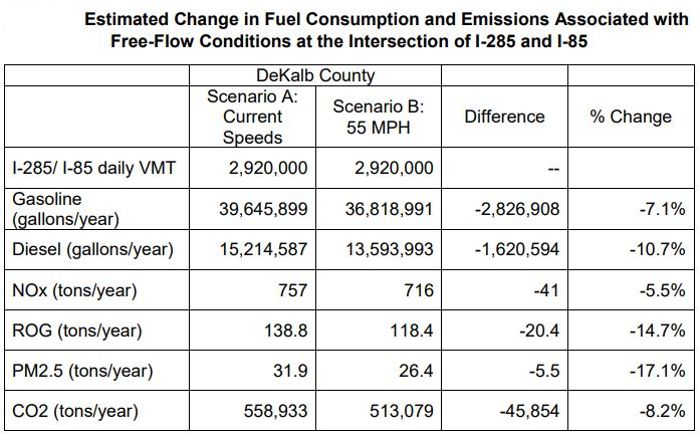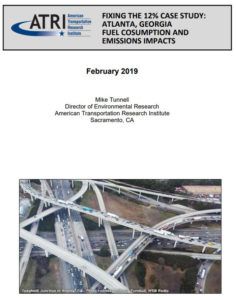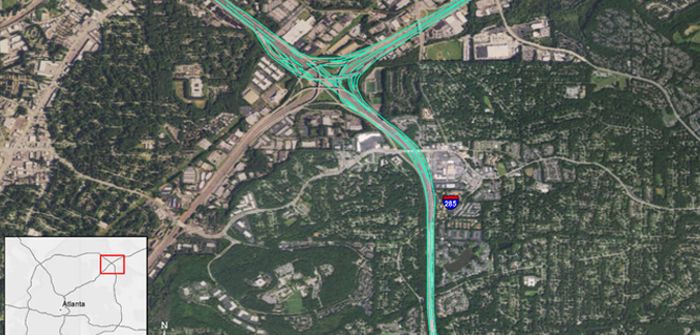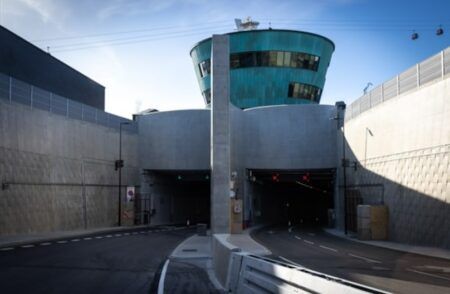The USA trucking industry’s not-for-profit research organization American Transportation Research Institute (ATRI) has released a case study that quantifies and demonstrates how improvements to the country’s highway infrastructure can help conserve fuel and reduce emissions.
Nationally, traffic congestion is estimated to have increased the trucking industry’s fuel consumption by 6.87 billion gallons in 2016, adding an additional US$15.74bn to its fuel bill. In the newly released analysis, ATRI estimated the fuel consumption and emissions impacts of congestion at one of the worst traffic bottlenecks in the country, the interchange of I-285 and I-85 in Atlanta, Georgia, known locally as ‘Spaghetti Junction’.
 The report is the second case study ATRI has published as part of its ‘Fixing the 12%’ research initiative. The institute previously found that 89% of the trucking industry’s congestion costs are generated from just 12% of Interstate miles. ATRI says improving that 12% could positively affect the flow of people and goods, as well as the environment.
The report is the second case study ATRI has published as part of its ‘Fixing the 12%’ research initiative. The institute previously found that 89% of the trucking industry’s congestion costs are generated from just 12% of Interstate miles. ATRI says improving that 12% could positively affect the flow of people and goods, as well as the environment.
The intersection in northern DeKalb County, just northeast of Atlanta, connects two key Interstates: I-285 is the beltway around the city; and I-85 is a major traffic corridor from the northeastern suburbs into the downtown district.
The interchange is a five-level stack with additional ramps to accommodate traffic on four nearby side roads. It has 14 bridges, the highest rising 90ft (27.5m), and handles approximately 300,000 vehicles each day.
 As individual infrastructure issues tend to be unique, ATRI, with the assistance of Trinity Consultants, an international environmental, health and safety consultancy, used three baseline data components for the analysis:
As individual infrastructure issues tend to be unique, ATRI, with the assistance of Trinity Consultants, an international environmental, health and safety consultancy, used three baseline data components for the analysis:
- ATRI’s Freight Performance Measurement (FPM) database of truck global positioning system (GPS) data was used to determine vehicle speeds by time of day;
- Average Annual Daily Traffic (AADT) figures were obtained from the Georgia Department of Transportation’s (GDOT’s) Traffic Analysis and Data Application (TADA) website to identify traffic volumes; and
- The US Environmental Protection Agency’s (EPA) Motor Vehicle Emission Simulator (MOVES), a state-of-the-science emission modeling system that estimates emissions for mobile sources at the national, county and project level for criteria air pollutants and greenhouse gases.
Based on these sources, fuel consumption and emissions from existing traffic conditions were estimated and compared to an assumed free-flow condition. The analysis reveals that if improvements to the interchange were made to allow the free-flow of traffic, fuel consumption and emissions could be reduced.
 The study found that increasing average vehicle speeds to 55mph (88.5km/h), which currently are as low as 14mph (22.5km/h) during the weekday evening commute, is projected to save 4.5 million gallons of fuel annually – savings which benefit both local commuters and trucking companies.
The study found that increasing average vehicle speeds to 55mph (88.5km/h), which currently are as low as 14mph (22.5km/h) during the weekday evening commute, is projected to save 4.5 million gallons of fuel annually – savings which benefit both local commuters and trucking companies.
Beyond fuel savings, reductions in emissions were estimated to be 17% for fine particulate matter (PM2.5), 5.5% for smog-forming NOx emissions, and 8% for carbon dioxide (CO₂) emissions.
“Fleets today consider not only their bottom line, but also their environmental performance,” said Mack Guest, president of Georgia-based LAD Truck Lines. “This case study highlights how investing in our nation’s infrastructure can serve the dual purpose of lowering transportation costs and air pollution.”





